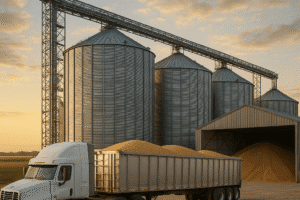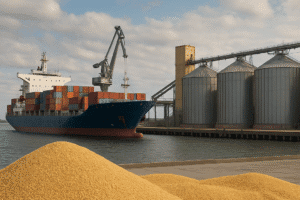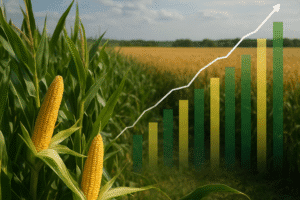Drought has emerged as one of the most pervasive challenges affecting global agriculture, with far-reaching consequences for food security, economic stability, and rural livelihoods. As water resources dwindle in key grain-producing regions, stakeholders from farmers to policymakers must grapple with shifting production patterns, market volatility, and the urgent need for sustainable solutions. This article examines the multifaceted impact of drought on the global grain supply, highlighting regional hotspots, price dynamics, and strategies for building resilience across the food system.
Understanding Drought and Its Agricultural Effects
Drought conditions are defined by prolonged periods of below-average precipitation, resulting in soil moisture deficits and stress on crops. In the context of grain cultivation—particularly wheat, maize, and rice—limited water availability can sharply reduce yield potential, impair plant development, and increase vulnerability to pests and diseases. Several factors contribute to the severity of drought events:
- Climate change: Rising temperatures and altered precipitation patterns intensify drought frequency and duration, disrupting historical growing seasons.
- Soil degradation: Erosion, compaction, and loss of organic matter diminish the soil’s capacity to retain water and support robust crop roots.
- Water management: Inefficient irrigation infrastructure and over-extraction of groundwater strains freshwater reserves during critical growth stages.
At the physiological level, crops under drought stress exhibit reduced photosynthesis, accelerated senescence, and lower grain-filling rates. Prolonged stress can lead to biodiversity loss within agroecosystems, as native plants and beneficial microorganisms struggle to survive in parched soils. Consequently, the agricultural sector faces a dual challenge: producing sufficient grain to meet demand while preserving the environmental resources that underpin future productivity.
Regional Impacts on Grain-Producing Areas
Not all grain belts experience drought equally. Certain regions are particularly prone to water scarcity, exacerbating supply risks on international markets.
North American Corn Belt
The U.S. Corn Belt has historically relied on a combination of rainfall and irrigation from the Ogallala Aquifer. In recent years, record-high temperatures and sporadic rainfall have led to below-average corn yields. Farmers have responded by adjusting planting dates, switching to drought-tolerant hybrids, and reducing fertilizer applications to conserve moisture. Nonetheless, production shortfalls in this region can ripple through global maize markets, boosting export prices and incentivizing alternative suppliers such as Brazil and Argentina.
European Wheat Regions
Southern Europe, encompassing Spain, Italy, and parts of France, confronts increasing summer droughts that hinder spring and winter wheat harvests. Traditional rainfed systems are under stress, prompting investments in drip irrigation and rainwater harvesting. Despite these adaptations, the European Union’s grain reserves may not fully shield consumers from sharp price spikes during consecutive dry seasons.
Asian Rice Paddies
Asia’s lowland rice paddies depend on monsoon rains and river flows. When drought disrupts the monsoon cycle, rice production declines significantly, with cascading effects on local food security. In countries like India and Thailand, farmers are exploring alternate wetting and drying (AWD) techniques to optimize water use without sacrificing yields. Yet, widespread adoption faces logistical and economic barriers, particularly for smallholder operations.
Market Reactions and Price Volatility
Global grain markets are highly sensitive to supply disruptions caused by drought. Price spikes can erode purchasing power in import-dependent nations, fuel inflationary pressures, and trigger geopolitical tensions over food resources. Key dynamics include:
- Commodity speculation: Traders often anticipate future shortages, driving up futures contracts and contributing to volatility beyond fundamental supply-demand balances.
- Export restrictions: In response to domestic scarcity, grain-exporting countries may impose quotas or tariffs, further constricting global availability.
- Currency fluctuations: Drought-affected economies may experience currency depreciation, raising the local cost of grain imports and exacerbating inflation.
Price volatility not only hurts consumers but also complicates planning for farmers and agribusinesses. Supply chain disruptions—from farm input shortages to transportation delays—can amplify the downstream effects of a drought event. In some cases, entire segments of the value chain, such as flour milling or livestock feed production, face acute raw material constraints, forcing recalibration of production strategies.
Adaptive Strategies and Future Prospects
Addressing drought’s impact on global grain supply demands coordinated efforts across multiple fronts. Key adaptive strategies include:
- Developing drought-resistant crop varieties through advanced breeding and biotechnological tools.
- Expanding efficient irrigation systems, such as drip and sprinkler networks, to maximize water delivery to the root zone.
- Implementing precision agriculture practices—soil moisture sensors, remote sensing, and variable-rate applications—to optimize input use.
- Promoting soil health via cover cropping, reduced tillage, and organic amendments to enhance resilience against moisture deficits.
- Strengthening policy frameworks that incentivize sustainable water use, protect aquifers, and foster cross-border cooperation on shared water resources.
Private sector investment in digital agriculture platforms and climate-smart solutions can accelerate the adoption of these measures. Meanwhile, international organizations and governments must engage smallholder farmers—who produce a significant share of global grain—in knowledge exchange programs and financial schemes that mitigate drought risk.
Looking ahead, the interplay between drought intensity and sustainability priorities will shape the future of the grain market. Efforts to build circular economy models, where irrigation runoff is captured and recycled, and where crop residues are repurposed for soil improvement, are gaining traction. Additionally, enhanced data analytics empower stakeholders to anticipate stress events and deploy early warning systems, reducing losses and improving resource allocation.
In sum, the challenge of maintaining a stable global grain supply in the face of intensifying drought underscores the need for comprehensive resilience-building. Through technological innovation, policy reform, and collaborative frameworks, the agricultural sector can navigate water scarcity and secure food availability for future generations.













